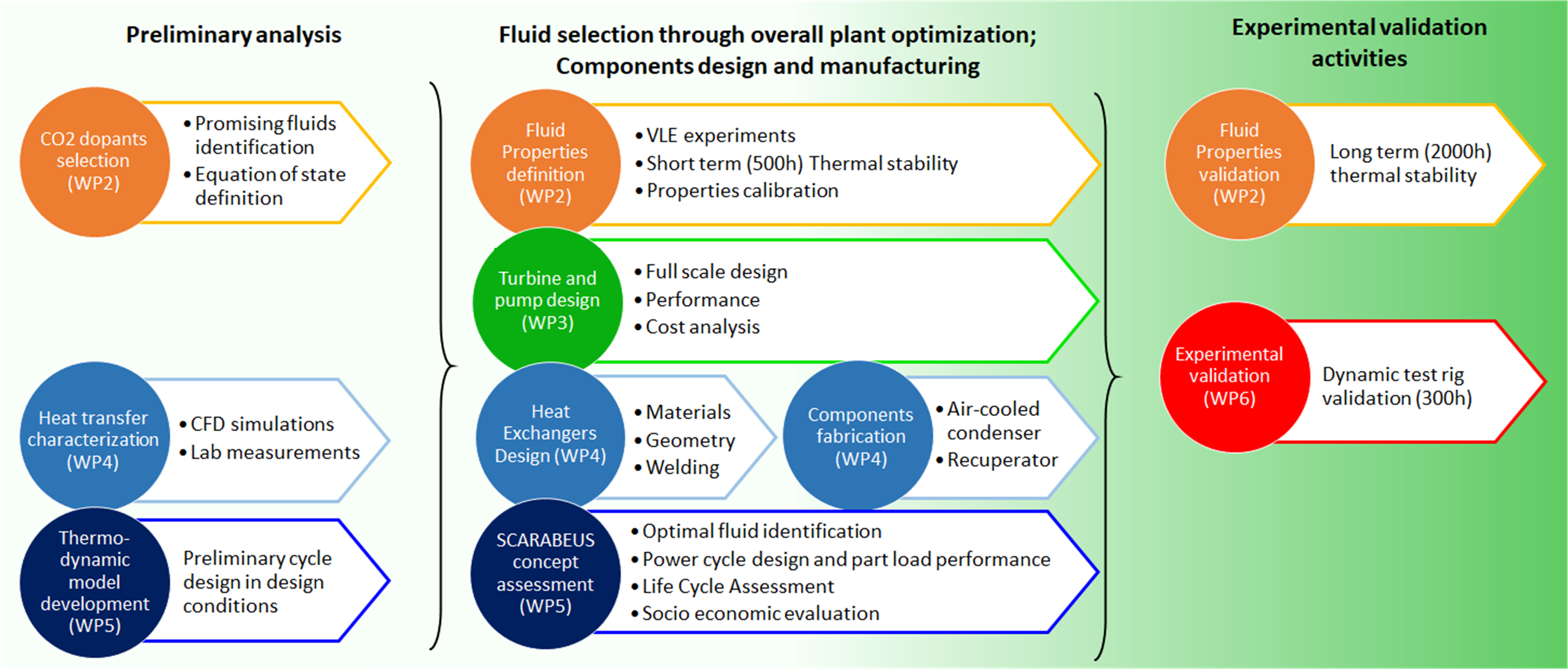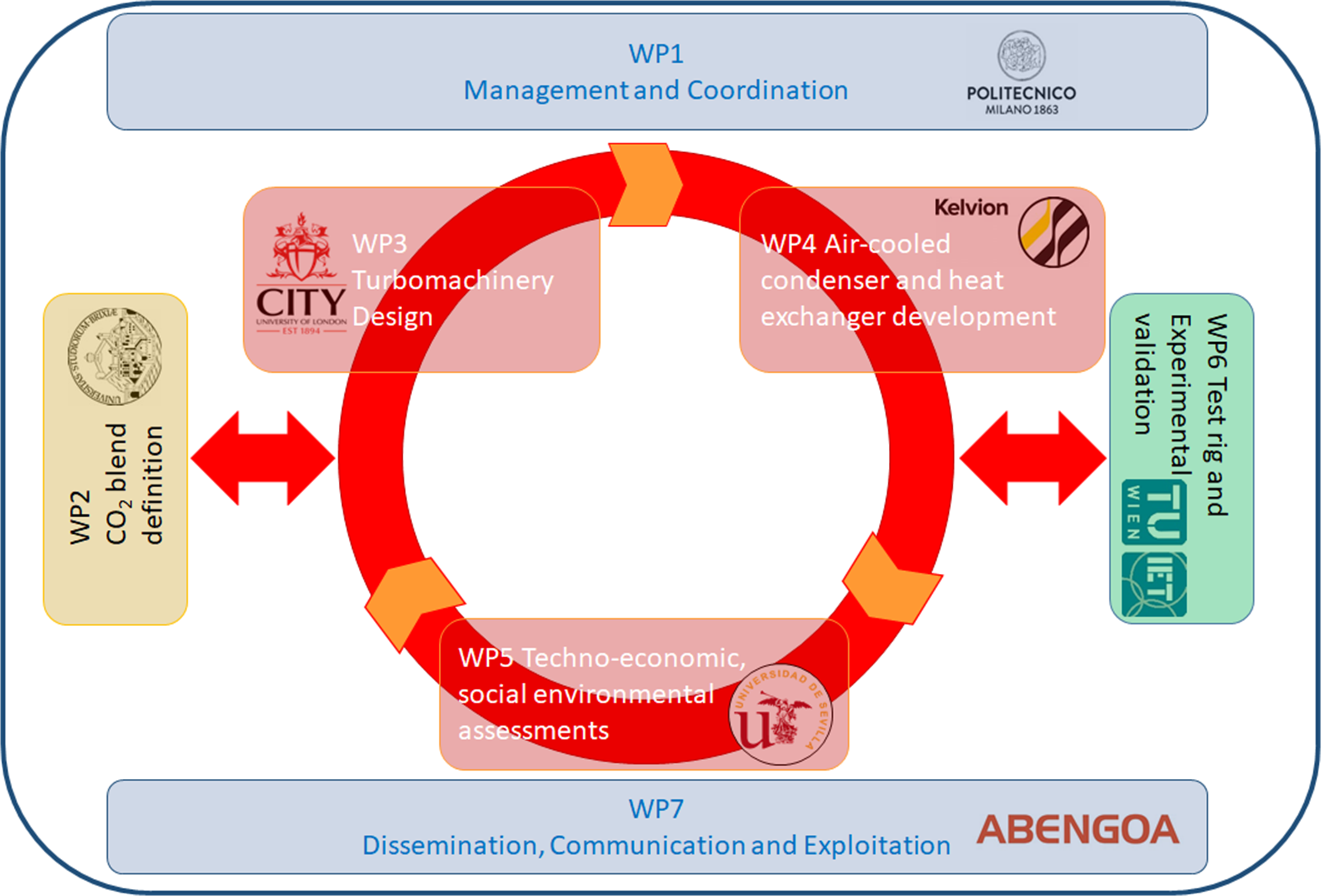METHODOLOGY
METHODOLOGY
Description of the methodology and of the overall approach
The primary objective of the SCARABEUS project is to demonstrate that using blended-CO2 is the only route currently possible to meeting the very ambitious economic performance of next generation Concentrated Solar Power plants: ≈50 €/MWh by 2050 according to the SET Plan and SunShot programs. This demonstration will be carried out for two selected CO2-blends, amongst a number of blends that will be explored within the project, in a test-rig that will include a recuperative heat exchanger and an air-cooled condenser specifically developed for the innovative working fluid. The overall approach adopted and the steps that will be undertaken to demonstrate the technology are shown schematically in the figure below.
Methodology adopted to demonstrate the techno-economic feasibility of SCARABEUS concept
IMPLEMENTATION
Work plan – Work packages, deliverables
The figure below shows the WP structure of SCARABEUS and the corresponding WP leader institutions. The WP structure comprises activities covering the whole value chain needed to prove thermodynamic, economic and environmental benefits of the proposed technology. The work plan is divided into 5 R&D work packages (WP2-6), WP1 on project management and coordination and WP7 on dissemination, communication and exploitation with a cross-cutting approach. WP2 will be devoted to identifying the most promising CO2 blends. The thermodynamic properties of these fluids will be determined and passed to WP5 where the overall plant optimization both from thermodynamic and economic standpoints will be carried out. WP5 will select the CO2 blend to be validated in the project through efficiency and LCoE calculations. In addition, WP5 will define the power block operating conditions which are necessary in WP3 for the design of the turbomachinery and in WP4 for the heat exchanger design and manufacturing. A prototype air-cooled condenser and recuperative heat exchanger will be designed and manufactured in WP4 to be tested in the experimental loop in WP6. WP3 will design a full-scale axial turbine and select a suitable pump which could be adopted in a commercial plant. Both components will also be characterised, and a detailed cost assessment will be performed. WP6 will build a test loop to validate the technology through 300 hours testing. Together with the concept, components such as the air-cooled condenser and recuperator will be manufactured and demonstrated. Two different fluids will be tested in WP6 and compared with pure CO2. Life Cycle Assessment (LCA) and natural capital assessment will be performed in WP5 to understand and evaluate the environmental and social impacts of the SCARABEUS technology. WP1 will ensure the accomplishment of the ambitious goals of the project and the achieved breakthrough potential and impacts. WP7 will promote the SCARABEUS project as widely as possible to the relevant scientific community, stakeholders and media. The WP structure reflects the concept of the proposal where development of new CO2 blending for power block will be developed and validated in a test loop. Furthermore, the activities of the different work packages and tasks are interlinked and each of the RTD work packages will end up in a specific product of the project.
PER diagram of te project




